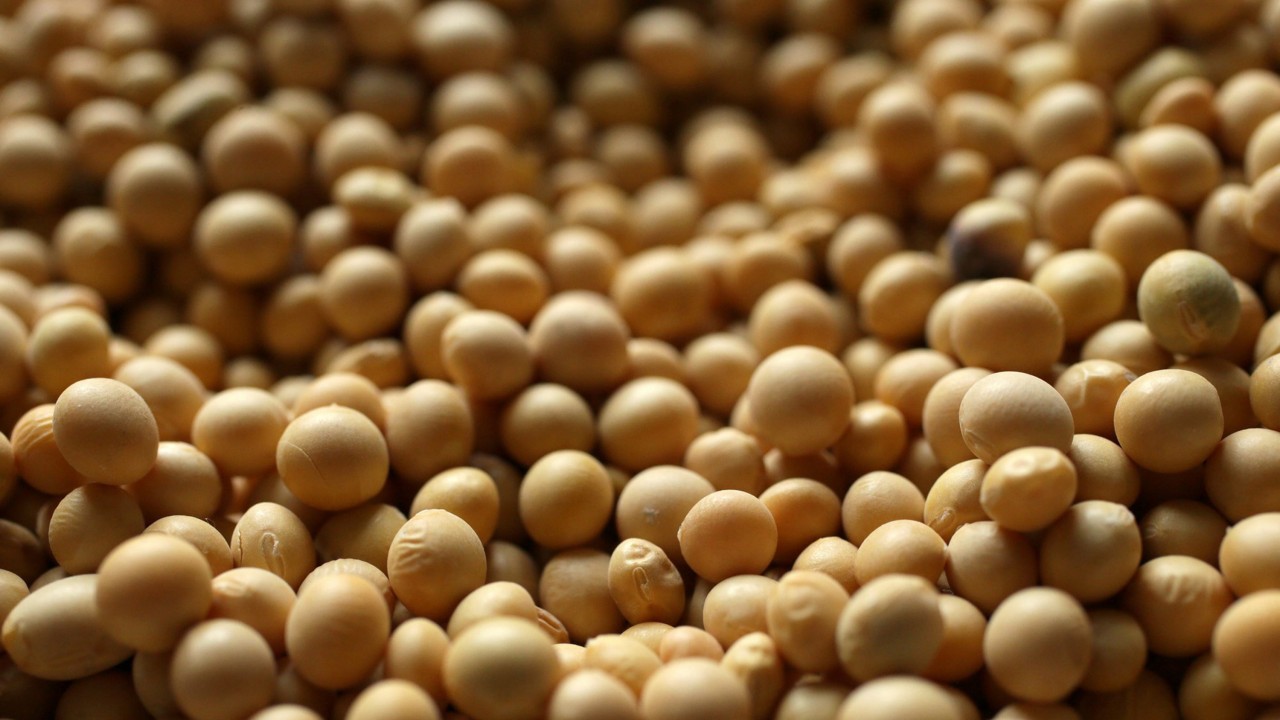Soy Australia eyes doubled production by 2033

Australia’s soybean industry is out to double its production in the next decade through increased plantings and improved agronomy.
As a net importer of soybean meal and soy isolates, peak industry body Soy Australia sees a bigger national crop as being a plus for businesses making stockfeed and products for human-consumption.
It also sees soybeans as having an expanded role to play in rotation with crops including sugarcane, cotton and maize, and it has engaged its first ever soybean industry development officer, Judy Plath, to facilitate the growth.
According to ABARES, Australia is growing 21,000ha of soybeans over this summer which is expected to yield 40,000 tonnes.
The figure is well down from 1998-99 and the following year, when more than 100,000t was grown over around 50,000ha, but the crop remains an important one for some growers from the Riverina in southern NSW to Far North Qld.
Qld’s soybean area has fallen from what is believed to be a record 32,900ha in 1989-90 to 6000ha over this summer, while in NSW, 36,600ha was the peak in 2012-13.
Expansion of cotton, particularly in the Riverina and on Qld’s Darling Downs, is largely behind the drop.
“While the Australian soybean industry is small by global standards, it plays an important role in many farming systems across Australia and is increasingly providing a higher value crop option for growers” Soy Australia chair and northern NSW grower Paul Fleming said in a Soy Australia statement.
Mr Fleming said soybean varieties released over the past decade have been specifically developed to meet the various and growing needs of the end-user market, both in Australia and abroad.
“The Australian domestic market relies heavily on locally grown soybeans for products such as soy milk, tofu, tempeh, flour and grits while markets such as Taiwan, South Korea and Japan present significant growth opportunities.”
“Soy Australia believes the demand for non-GMO Australian-grown good-quality soybeans is strong, but we need to increase production if we hope to develop long-term relationships with our end users.”
As an agronomist and long-time grower of soybeans in rotation with sugarcane on the family’s farm at Childers, Qld, Ms Plath aims to build awareness of agronomic best practice as well as the economic benefits of soybeans in the key growing regions.
Ms Plath began promoting soybeans as an ideal legume break crop for sugarcane in the Wide Bay area in 2003.
New varieties include Hayman for the north and Burrinjuck in the south, have the potential to encourage the introduction or reintroduction of soybeans to rotations, and Ms Plath said a strong price outlook is also adding to the crop’s appeal.
“In every region, there are other crops soybeans compete with; that can be cotton, maize, or mungbeans, so this role is about highlighting the benefits of soybeans, or if they’ve moved away from soybeans, to look at them again,” Ms Plath said.
“Of late, the price has been very strong, and we’re looking at a 10-year high this season as demand continues to outstrip supply.”
A ballpark price forecast for soybeans harvested next year is $750-$900 per tonne, and yields comfortably at 3-3.5t/ha yield, but
“With good water availability, the right nutrition, and regular insect control where needed, 5t/ha can be achieved.”
Usually only around $100 separates the top grade and the stockfeed, or full-fat, market, and demand from food and feed manufacturers has all grades in strong demand.
Downgrading can occur with a high incidence of insect or weather damage, low protein, or small seed size, and Ms Plath said part of her role is to spread the word about how to achieve good yields and quality.
“They’re very beneficial as a legume in the rotation; agronomically, they’re straightforward to grow, and they return a good amount of nitrogen to the soil,” Ms Plath said.
“If growers have the opportunity to focus on nutrition and use good insect monitoring, and harvest in a timely manner, they’ve got a great chance of their soybeans making edible grade.”
Judy and husband Jeff Plath and family have been growing soybeans for 20 years in rotation with sugarcane.
“Around Bundy, they’re a five-month crop, and we plant in December-January.
“They’re such a resilient crop; they’ve gotten through hot, dry, and cyclonic conditions, and pest infestations, and typically they will recover.
“We’ve never had a situation where we haven’t harvested.
“In 2011, parts of our farm were flooded…and they withstood the pressure of water running over them, and kept growing.”
The national soybean breeding program receives funding from levies collected by GRDC, and Ms Plath said research from the Qld Department of Agriculture and Fisheries, and the NSW Department of Primary Industries, has also been invaluable.
“DAF and the NSW DPI have been fantastic, and that’s led to the new agronomy manual that has reinvigorated interest in soybeans.”
Research in Qld has shown soybeans grown just one year in five will boost cane yields in dryland and irrigated areas, and they have long been established as a stand-out rain-grown crop in north-eastern NSW.
Read also
Wheat in Southern Brazil Impacted by Dry Weather and Frosts
Oilseed Industry. Leaders and Strategies in the Times of a Great Change
Black Sea & Danube Region: Oilseed and Vegoil Markets Within Ongoing Transfor...
Serbia. The drought will cause extremely high losses for farmers this year
2023/24 Safrinha Corn in Brazil 91% Harvested
Write to us
Our manager will contact you soon



